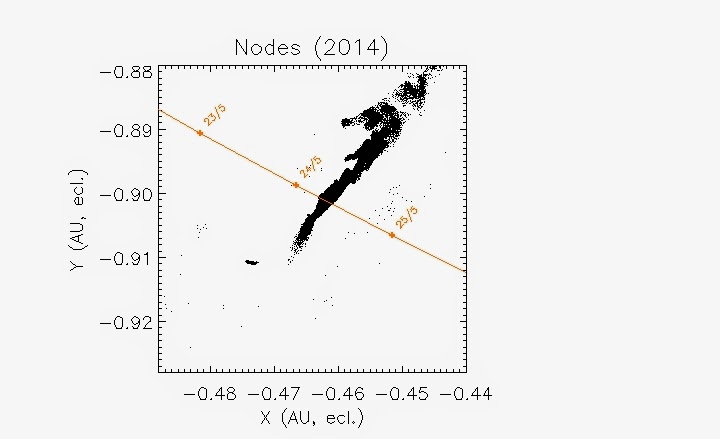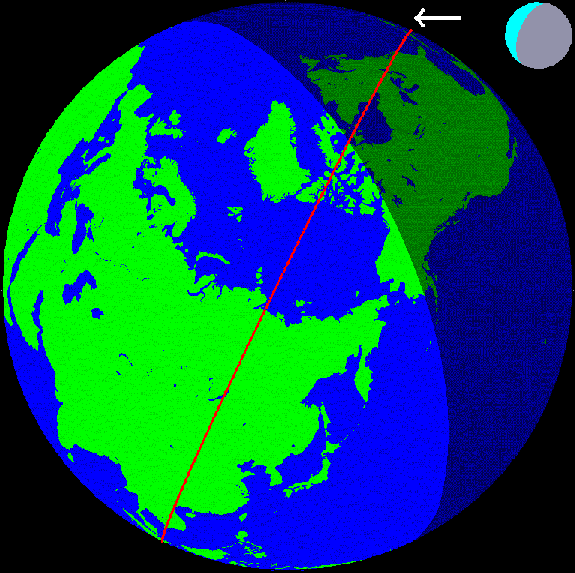We performed follow-up measurements of this object on 2014, April 14.95 with the 2.0-m f/10.0 Ritchey-Chretien + CCD telescope of La Palma-Liverpool (J13 MPC code). You can see our image below with the comet a about magnitude ~17.
According to a prediction by E. Lyytinen and P. Jenniskens, comet 209P/LINEAR will possibly cause a big meteor shower on May 24, 2014.
On May 29, 2014 this comet will pass just 0.055 AU from Earth or about ~8 million km (while the perihelion, i.e. closest approach to the Sun, will be on May 6, 2014) making it one of the closest comet approaches in history. Comet 209P/LINEAR will be at magnitude ~10 around the time of the shower.
The main source of activity should become 1898-1919 trails, however some meteors could be produced by the earlier trails of the comet, down to 1763 trail, which is the oldest computed trail, and even earlier. The computed time of maximum acitivity is May 24, 2014, at 7:21 UT, theoretical radiant is RA=122.8, Dec=+79.0 (in the constellation Camelopardalis).
Exact timing and activity level is difficult to estimate due to the limited physical observations of this comet. The estimate of level of the shower is based on available photometric measurements of the comet. Estimates give a ZHR of 100/hr to 400/hr, which is an excellent outburst! But this shower can become an exceptional one.
"Indeed, given the current orbit of the comet (from JPL HORIZONS ephemerids database), ALL THE TRAILS EJECTED BETWEEN 1803 AND 1924 DO FALL IN THE EARTH PATH IN MAY 2014!!!"As a consequence, this shower might as well be a storm. Below you can see a graph with the location of the meteoroid stream ejected by the comet at the Earth in 2014:
According to the image below (showing the hemisphere of Earth that will be facing the incoming dust particles from Comet 209P/LINEAR when the activity peaks on May 24, 2014), skywatchers in southern Canada and the continental U.S. will be especially well positioned to watch the sky show.
A recent paper by Q. Ye and P. A. Wiegert reanalyzes the optical observations of 209P/LINEAR obtained during its 2009 apparition, They found that the comet is relatively depleted in dust production, with Afρ at 1 cm level within eight months around its perihelion. This feature suggested that this comet may be currently transitioning from typical comet to a dormant comet. Given that the comet is relatively depleted in dust production they concluded that a meteor storm may be unlikely. We are analyzing our recent observation to calculate the Afρ parameter and we'll post the results here as soon as they are available.






Reader Comments
to our Newsletter